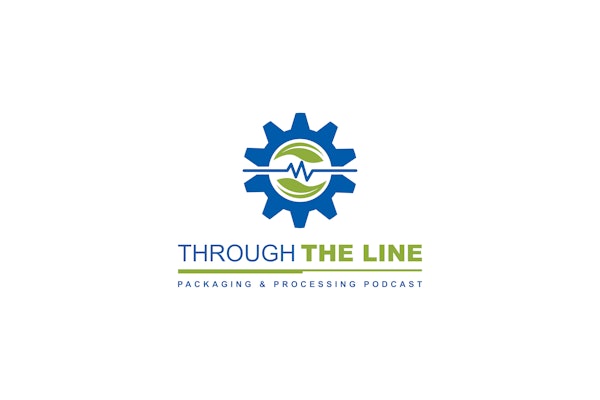Should packaging machine buyers demand equipment with interoperability between motion controller and drives but not worry about interoperability between drives and motors? Should SERCOS be considered as a standard motion networking protocol for packaging machine automation? Or does focusing the debate on such a specific protocol miss the larger point of what packaging machine end users are really after? More than 50 attendees grappled with at the most recent OMAC (Open Modular Architecture Controls) meeting in late February in Orlando, FL, grappled with these tough questions. (For a background on OMAC, see www.packworld.com/go/omac.) End-user attendees included engineers from Procter & Gamble, Nabisco, M&M Mars, Frito-Lay and Hershey Foods, among others.
Defining states
While attendees wrestled with the questions mentioned above, Andrew McDonald, a controls engineer from Unilever's United Kingdom headquarters, delivered a breakthrough idea. He described how Unilever's most pressing need is "to be able to move packaging machines between factories and set them up quickly. As such, we spent quite a bit of time developing a standard model of data across the packaging line." In other words, standardizing what machines or components say to one another (the data) is arguably more important than how they say it (the network protocol used to communicate that data). McDonald indicated that for Unilever, defining standards down to the drive level for performance monitoring is of secondary importance. To define a data model, Unilever had to get everyone in all its plants (and its packaging machinery builders) to agree on a core set of "states" that a packaging machine could experience: running, starved, jammed, idle, and so forth. Then all its machines (and machine components) could be programmed to communicate in terms of those standard states. Thus, when a machine is moved from one plant to another, the reprogramming time is minimal, because all machines (and machine components) on the packaging line are communicating the same type of data. This is especially crucial as more manufacturers begin to network their packaging lines and communicate production data to higher-level, corporate computer systems.
Wide disagreement
Currently, end users do not widely agree upon standards for packaging machinery states. Several end-user attendees indicated that they've struggled to achieve, without success, what Unilever has accomplished. Those trying to standardize states have met with extensive disagreement within their own companies about the definition of machine states, how many exist and what they should be called. Unilever's breakthrough was to leverage a portion of an existing standard called the S88 batch control standard (formally known as ANSI/ISA-88.01-1995) from the Instrumentation, Systems and Automation Society. "We changed a couple of names [of states]," said McDonald. But he maintains that S88, despite being a process-oriented standard, is close enough to what's required for packaging machinery. An engineer from Siemens said S88 is "a pretty elegant model because it's expandable and collapsible." Although McDonald cautioned that Unilever's data model is Europe-centric and developed primarily with liquid filling in mind, others at the meeting didn't see those issues as problems. While the group was enthusiastic about building on Unilever's work to flesh out industry-wide standards for packaging machine states, some were skeptical about achieving the goal because of diversity inherent in packaging applications, end user needs and machine builder needs.
Making tough decisions
On the question of interoperability, OMAC attendees informally agreed that the group should focus its efforts on interoperability between motion controllers and drives but not worry about interoperability between drives and motors. Among the reasons cited: First, many controls suppliers are offering a drive and motor combined in one physical unit, rendering the drive/motor interoperability issue moot. Second, according to analyst Sal Spada from ARC, the research firm that facilitates the OMAC group, drive/motor interoperability headaches are significantly less with digital drives (toward which the entire industry is moving) than with analog drives. Third, many machinery buyers have enough to worry about when buying a piece of equipment and aren't eager to specify components all the way down to the motor level. Thus, they're happy to cede those decisions to the machinery builder.
SERCOS floated
The subcommittee on connectivity and architecture floated SERCOS as a motion standard for drive-to-controller networks. But the presenter, Steve Ford from M&M Mars, acknowledged one shortcoming of the current SERCOS standard: Due to the different ways SERCOS can be implemented, replacing one manufacturer's drive that of with another doesn't guarantee that it will work when the machine is turned on. The SERCOS standards organization would have to be lobbied to update the SERCOS specification to resolve the issue. One attendee, Patrik Hug of motion controls supplier Elau, felt that choosing (or not choosing) a specific protocol such as SERCOS won't solve the problems that packaging machinery buyers are currently experiencing. His point, which echoed that of Unilever's McDonald, was that it's more important to standardize on what controllers should say than to worry about advocating a particular protocol for how they say it.
Surveys to be posted online
The education subcommittee reported that it was prepared to release three Web-based surveys by the end of March, likely on PMMI's Web site at www.pmmi.org and possibly on the OMAC Web site as well (www.arcweb.com/omac). The purpose of the surveys--one each for end users, machinery builders and controls suppliers--is to identify the skills companies need entry-level people to know upon graduating from a technical school. Presenting on behalf of the education subcommittee, Dr. Ken Ryan, who directs the motion control education program at Alexandria Technical College in Alexandria, MN, floated the idea of OMAC-certified technical school graduates. Included in the plan is the idea that an OMAC-certified graduate would meet some defined knowledge standard consistent with the open architecture goals advocated by OMAC. An attendee from controls supplier Phoenix Contact (Harrisburg, PA) suggested that to avoid legal issues associated with certification of an individual, it might be better to focus on an OMAC-endorsed or accredited education program instead of an OMAC-certified graduate. Ryan also indicated that another draft of a glossary of packaging-related controls terms, on which the subcommittee has been working, is posted on the OMAC Web site, and comments are currently being solicited. The next public meeting of the OMAC Motion for Packaging working group will be held in Chicago on April 25, 2001 during CMM Intl., a converting machinery show, from 8:30 a.m. to 12:00 p.m., in room S105D in the South Hall.
Editor's Note: Sign up to be notified via e-mail of upcoming packaging-specific OMAC meetings, surveys and articles. Your e-mail address will be used for OMAC notification purposes only and will remain confidential.


























